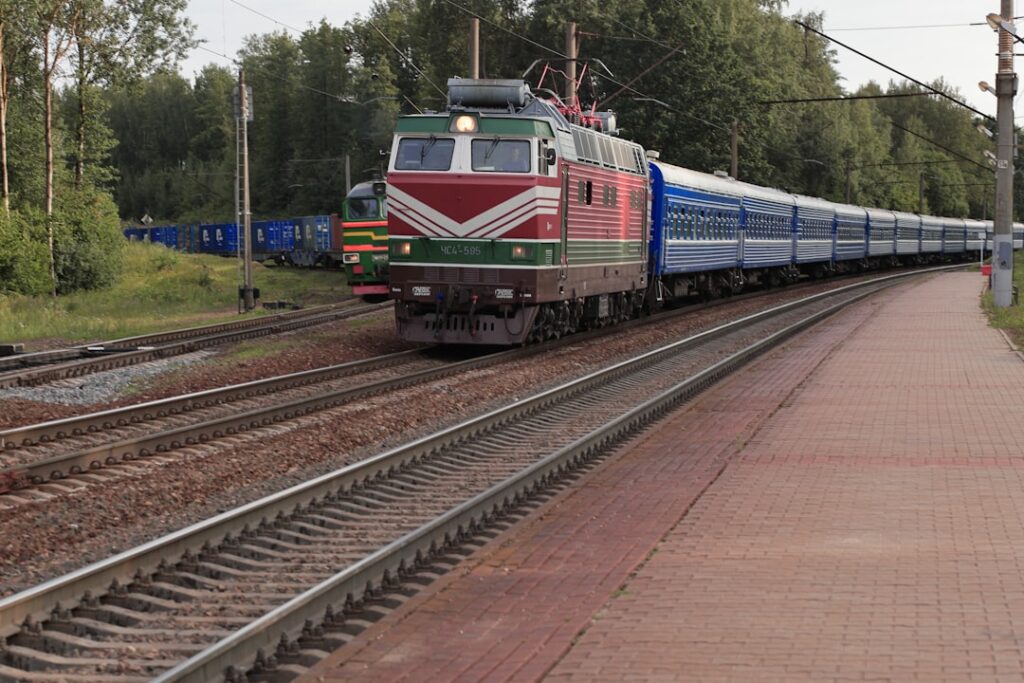London’s Tube network, also known as the Underground, is one of the most iconic and extensive transportation systems in the world. With over 270 stations and 11 lines, it covers a vast area of the city, making it an essential mode of transportation for both locals and tourists. The Tube system plays a crucial role in connecting different parts of London, allowing people to travel quickly and efficiently. It is not only a means of getting from one place to another but also a fascinating cultural and historical experience.
Key Takeaways
- London’s Tube network is full of hidden gems waiting to be discovered.
- Navigating the Underground can be made easier with tips and tricks for a successful Tube safari.
- The history of London’s Tube system is fascinating and worth exploring.
- Tube stations are not just functional spaces, but also showcase impressive art and architecture.
- Abandoned Tube stations hold secrets and stories waiting to be uncovered.
Discovering the Hidden Gems of London’s Tube Network
While many people are familiar with the major Tube stations like King’s Cross, Piccadilly Circus, and Waterloo, there are several lesser-known stations that are worth exploring. These hidden gems offer a unique glimpse into London’s history and culture. For example, Aldwych station is a disused station that was once part of the Piccadilly line. It is now used as a filming location for movies and TV shows. Another hidden gem is Down Street station, which was used as a bunker during World War
Today, it is closed to the public but can be visited on special tours.
Each Tube station has its own unique features that make it worth visiting. Some stations have beautiful architecture, while others have interesting art installations. For example, Covent Garden station is known for its stunning Victorian architecture, while Canary Wharf station has a futuristic design with its glass roof and sleek lines. Additionally, many Tube stations have art installations that add to their charm. For instance, Tottenham Court Road station has a series of colorful mosaics depicting scenes from the neighborhood’s history.
Navigating the Underground: Tips and Tricks for Tube Safari
Planning your Tube safari can be an exciting adventure in itself. To make the most of your experience, it’s important to plan ahead and consider the best times to ride the Tube. Avoiding rush hour is key to avoiding crowds and long lines. Rush hour in London typically occurs between 7:30 am and 9:30 am in the morning and 5:00 pm and 7:00 pm in the evening. If possible, try to ride the Tube outside of these times to have a more comfortable and enjoyable experience.
To avoid getting lost or confused while navigating the Tube network, it’s helpful to familiarize yourself with the Tube map and plan your route in advance. There are several apps and websites available that can help you plan your journey, including Transport for London’s official website. Additionally, it’s a good idea to have a contactless payment card or an Oyster card, which can be used to pay for your Tube fare. These cards can be easily topped up at any Tube station.
The Fascinating History of London’s Iconic Tube System
The origins of the Tube system can be traced back to the mid-19th century when the first underground railway, the Metropolitan Railway, was opened in 1863. This marked the beginning of an era of underground transportation in London. Over the years, the Tube network expanded, with new lines and stations being added to accommodate the growing population of the city.
The Tube system has also been shaped by historical events. During World War II, many Tube stations were used as air-raid shelters and bunkers. The Underground played a crucial role in protecting Londoners during the Blitz. In more recent history, the Tube has been targeted by terrorist attacks, most notably the bombings on July 7, 2005. These events have had a significant impact on the security measures and infrastructure of the Tube network.
Exploring the Art and Architecture of Tube Stations

Tube stations are not just functional spaces; they are also works of art in their own right. Many stations feature stunning architecture that reflects different periods in London’s history. For example, Westminster station has a beautiful Edwardian design, while Southwark station has a modernist style. The architecture of Tube stations often reflects the neighborhoods they serve, giving each station a unique character.
In addition to architecture, many Tube stations also feature art installations that add to their aesthetic appeal. For example, Baker Street station has a series of bronze statues depicting Sherlock Holmes, as the famous detective’s fictional address is located nearby. Other stations, such as Charing Cross and Tottenham Court Road, have vibrant murals and mosaics that showcase the history and culture of the area.
Uncovering the Secrets of Abandoned Tube Stations
London’s Tube network is not just made up of active stations; there are also several abandoned stations that have a fascinating history. These stations were once part of the Tube system but have since been closed to the public. However, some of them can still be visited on special tours or events.
One example of an abandoned Tube station is Aldwych, which was mentioned earlier as a hidden gem. This station was closed to the public in 1994 but has been used as a filming location for movies and TV shows. Another abandoned station is Brompton Road, which was closed in 1934 due to low passenger numbers. Today, it is used as a storage space for the nearby Harrods department store.
Riding the Tube: A Cultural Experience in Itself
Riding the Tube is not just about getting from one place to another; it is also a cultural experience in itself. The diversity of people and cultures on the Tube is a reflection of London’s multicultural society. You can encounter people from all walks of life, from business professionals to artists and musicians.
Riding the Tube also offers unique experiences that you won’t find anywhere else. For example, buskers often perform in Tube stations, providing live music for commuters and tourists alike. Additionally, the Tube is a great place for people-watching, as you can observe the hustle and bustle of London life.
The Quirky and Unusual Tube Stations of London
London’s Tube network is home to several stations with unusual names and unique features. These quirky stations add to the charm and character of the Tube system. For example, Elephant & Castle station is named after a nearby landmark, which is a statue of an elephant carrying a castle on its back. Another quirky station is Cockfosters, which has a name that often raises eyebrows but actually refers to the location of the station in the Cock Fosters estate.
Some Tube stations also have unique features that make them stand out. For instance, Angel station has a series of escalators that are so long they have their own nickname, “The Angelator.” Another example is Canary Wharf station, which has the longest escalators on the Tube network, measuring 60 meters in length.
From Harry Potter to James Bond: Famous Tube Scenes in Film and TV
London’s Tube system has been featured in numerous films and TV shows, making it a familiar sight to audiences around the world. From Harry Potter to James Bond, the Tube has played a role in some iconic scenes in popular media.
One of the most famous Tube scenes is from the film “Skyfall,” where James Bond chases a villain through the London Underground. Another memorable scene is from “Harry Potter and the Order of the Phoenix,” where Harry and his friends use the Tube to travel to the Ministry of Magic. These scenes not only showcase the iconic design of the Tube stations but also add to the cultural significance of the Underground.
The Future of London’s Tube System: Innovations and Developments
The Tube system is constantly evolving and adapting to meet the needs of Londoners. There are several upcoming developments in the Tube network that will improve the efficiency and accessibility of the system. For example, the Elizabeth line, also known as Crossrail, is set to open in 2022. This new line will connect different parts of London and reduce travel times.
In addition to new lines, there are also innovations in Tube technology that are being implemented. For example, contactless payment cards and mobile ticketing have made it easier for passengers to pay for their fares. There are also plans to introduce driverless trains in the future, which will further improve efficiency and safety.
Tube Safari: A Unique Way to Experience London’s Vibrant Culture and History
Tube safari is a unique way to experience London’s vibrant culture and history. It combines the thrill of exploring hidden gems and abandoned stations with the opportunity to immerse yourself in the diverse atmosphere of the Tube network. By planning a Tube safari, you can discover parts of London that are off the beaten path and gain a deeper understanding of the city’s rich heritage.
There are several benefits to exploring London’s Tube network. Firstly, it allows you to see different parts of the city and experience its diverse neighborhoods. Secondly, it offers a glimpse into London’s history and how it has evolved over time. Lastly, it provides an opportunity to interact with locals and learn about their experiences living in the city.
To plan a successful Tube safari, it’s important to do some research beforehand and create an itinerary based on your interests. Whether you’re interested in art and architecture or want to explore abandoned stations, there is something for everyone on a Tube safari.
London’s Tube network is not just a transportation system; it is a cultural and historical treasure that offers a unique way to experience the city. From hidden gems and abandoned stations to art installations and iconic film scenes, the Tube has something for everyone. By exploring the Tube network, you can uncover the secrets of London’s past and present, and gain a deeper appreciation for the city’s vibrant culture and history. So next time you visit London, don’t forget to take a Tube safari and see the city from a different perspective.
Looking to embark on a thrilling adventure through the world of sketching? Look no further than Sketch Scroll’s fascinating article on “The Art of Tube Safari.” This captivating piece takes you on a visual journey, exploring the unique art form of sketching while riding the subway. Discover how artists capture the essence of their surroundings, from bustling cityscapes to intriguing characters. Dive into this immersive experience by checking out the article here. Get ready to be inspired and see the world through an artist’s eyes!
FAQs
What is Tube Safari?
Tube Safari is a term used to describe the activity of exploring different parts of the London Underground system, also known as the Tube, for leisure or tourism purposes.
Is Tube Safari legal?
Tube Safari is legal as long as it is done within the rules and regulations set by Transport for London (TfL). This includes not trespassing on restricted areas and not causing any disruption to the normal operation of the Tube.
What are the benefits of Tube Safari?
Tube Safari allows people to discover and appreciate the unique architecture, history, and culture of the London Underground system. It can also be a fun and adventurous way to explore the city.
What are the risks of Tube Safari?
Tube Safari can be dangerous if not done properly. It involves navigating through unfamiliar areas, which can be confusing and disorienting. There is also a risk of getting lost, encountering hazards such as live rails, and being caught by TfL staff for breaking the rules.
How can I prepare for a Tube Safari?
Before embarking on a Tube Safari, it is important to research the areas you plan to visit, familiarize yourself with the Tube map, and plan your route in advance. It is also recommended to bring a map, a fully charged phone, and enough food and water for the journey.
Are there any Tube Safari tours available?
Yes, there are several companies that offer Tube Safari tours, led by experienced guides who are knowledgeable about the history and culture of the London Underground system. These tours are a safe and informative way to explore the Tube.






